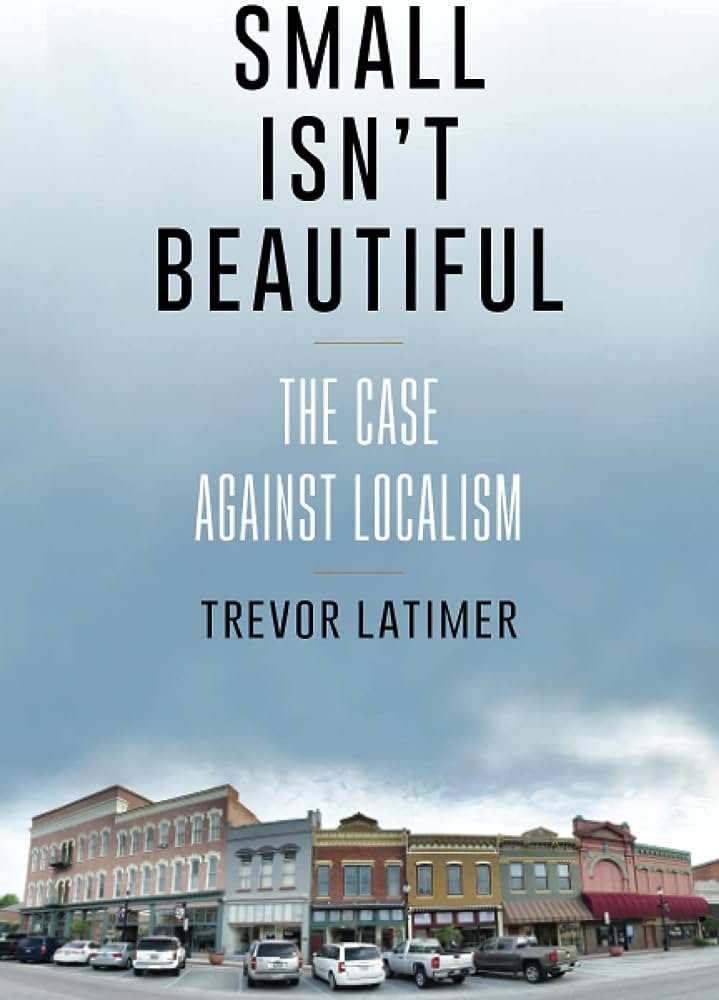
What Court Mergers Teach Us About Cutting Government Costs
Across the world, consolidation is a common way of reforming local government. Advocates argue that combining two or more local governments enables the new, larger government to reduce spending by providing services more efficiently. One way that mergers achieve this is by spreading large capital costs over a larger population: instead of two small towns operating their own trash removal service or two small school districts running two administrative systems, the larger local government can operate one. It is also argued that mergers can reduce spending through the elimination of redundant departments, services, and staff.

Resettled Refugees and African Americans in the Same Neighborhoods
Our study delves into the relationship between resettled refugees and native Black Americans who share neighborhoods but may experience distinct realities. We aim to understand if refugees and native Blacks perceive their surroundings similarly; if they interact; and whether they view each other as strangers, threats, or potential allies for collective problem-solving. Our investigation focuses on intergroup dynamics and local power relations between "old locals" (incumbent residents) and "new locals" (resettled refugees) to assess opportunities for community building between these historically minoritized multiethnic groups.

With a little help from my friends?
Cities around the world face declining revenues and increasing demands for public services by residents and commuters. Large metropolises have been navigating times of deficit for a long time. The pandemic only intensified these dynamics, particularly in big cities. Cross-boundary dynamics, such as contracting out or joint production of services, are well-known practices intended to (a) lower the costs of services, (b) increase service quality, and/or (c) enable access to certain services.

‘Anywhere but Here’
Homelessness is a pressing issue in many communities across the United States, with California often at the epicenter of the crisis. Despite numerous policy initiatives aimed at its alleviation, for six straight years, the problem has increased nationwide. Areas where we had seen improvement, such as veteran and family homelessness, are again on the rise. Meanwhile, racial disparities in homelessness are at an all-time high, with communities of color experiencing the phenomenon at three to four times the percentage of their overall representation in the population.

From the Local to the Hyperlocal
Mark Chou (Austrialian Catholic University) reviews “Small Isn’t Beautiful: The Case Against Localism” and “Hyperlocal: Place Governance in a Fragmented World” in this book review essay.

Political Underrepresentation Among Public Benefits Recipients
In November 2020, all eyes were on Pennsylvania in the lead-up to the hotly-contested presidential election. Four years prior, Donald Trump had carried the state by under 45,000 votes, out of more than six million ballots cast. Given its pivotal position as a presidential swing state, campaigns and grassroots groups blanketed the state to register and then turn out people to vote. Turnout in that election broke modern records.
But one key group of eligible voters was underrepresented among the record-high electorate: people receiving means-tested public benefits. Studying voter registration and voting in a large county in Pennsylvania, we found that people enrolled in means-tested public benefits programs register to vote and vote much less often than non-recipients.

Towards a Measure of Local Legislative Professionalism
Local legislatures are not, on average, poorly resourced institutions that are staffed by citizen legislatures, nor are they professional bodies more akin to Congress. Instead, much like state legislatures, they tend to fall somewhere in the middle, with most municipalities taking on some characteristics of each type. In the end, we hope this measure will help scholars and practitioners of urban politics better understand how institutional structures, like professionalism affect outcomes.

Digital Symposia are back!
Symposia on the Urban Affairs Review Forum facilitate critical engagement of several scholars around a common theme or question of interest. Typically, each symposium will include between six and twelve short articles of approximately 2,000–4,000 words. Unlike research articles published in the journal, these pieces will not go through the typical peer-review process. Rather, they will be commissioned by one of the UAR’s co-editors who will be responsible for reviewing pieces before publication. These articles are intended to be of interest to fellow scholars but also to reach beyond an academic audience to engage policymakers, practitioners, media outlets, and the general public.

“Defund” or “Refund” the Police?
In June of 2020, like many of you, we watched as George Floyd died at the hands of the Minneapolis police officer Derek Chauvin. We also watched as countless residents of cities took to the streets to protest this injustice. At the same time, the coronavirus pandemic meant that most city council meetings were being held via Zoom. In meeting after meeting, we observed calls to defund the police or move funds to other departments. While popular media reported that most departments did not defund their police budgets, the narrative and the rhetoric persisted. We wondered: to what extent might local governments have reduced their police budgets in the aftermath of the protests?

Do Land Banks Mean Progress Toward Socially Equitable Urban Development?
Within the US, land banks have become a popular model to transform vacant and abandoned sites into productive properties in cities facing population decline. Land banks wield significant powers, assembling land and disposing of property. Local governments have viewed land banks as an improvement to the municipal management of foreclosed property in cities losing population and a tool to provide community programs that support social equity.

Innovating Methodologies for Examining Gentrification-Induced Social and Cultural Displacement
Community stakeholders have sought to mitigate the impacts of gentrification, particularly among communities of color. Community-engaged, action-oriented research holds promise for developing interventions. Specifically, this research approach helps to center the voices of those most impacted and ensures community-informed solutions. In the same vein, the complex impacts of gentrification on space and place call for innovative research that highlights these dynamics. Such innovative research has the potential to further inform community and policy level interventions.

Using the Urban Regime Framework to Learn from Urban Challenges
In recent decades, developments related to globalization, immigration, the emergence of the post-industrial city, climate change, and the environment have posed challenges for cities all over the world. Scientists try to make sense of these developments and help cities cope with them. An increasingly appealing framework employed to understand and explain these challenges falls under the broad heading of “urban governance.”

The Emergence of Environmental Justice in General Plans
Urban planning has an uneasy relationship with environmental justice. Poor planning decisions and discriminatory practices have historically heightened the burdens of environmental contamination in low-income neighborhoods and communities of color, in comparison to white, wealthy populations. Since the 1980s, activists have garnered some regulatory and scholarly support for changes to policy and planning processes, but urban planners have been slow to adopt an explicit EJ framework in land use policies. The planning profession, however, has the capacity to help ensure that future development does not repeat the unjust environmental outcomes of the past.

What is the future of survey-based data collection for local government research?
Local governments are “where the rubber meets the road” for many policies, which makes them an important foci for the study of policy adoption, diffusion, implementation, and management. However, the data needed to examine them in a manner that enables generalizable results can be hard to come by. As a result, researchers often have to collect their own data about municipal priorities, policies, and decision-making via survey efforts targeting local government officials.

Innovation Districts
Innovation districts have gained attention as a fast-spreading urban economic development strategy, raising numerous questions. What are their distinguishing attributes? Are they a substantive policy innovation? Are they likely to succeed in fostering innovation and economic dynamism? Innovation districts have been strongly promoted (by the Brookings Institution and by the Global Institute on Innovation Districts among others) and are proliferating as a popular strategy for urban economic development.

Sanctuary Policies and the Influence of Local Demographics and Partisanship
Today we understand immigration to be a highly polarizing and partisan issue, but it was not always this way. At many times throughout the history of the United States, immigration was a political non-issue, particularly at the local level. When it has arisen as a matter of public debate, partisan cleavages around the issue were far from clearly defined.

Producing and Contesting Meanings of Participation in Planning
When Sherry Arnstein published the seminal article “A Ladder of Citizen Participation” in 1969, she conceptualized participation in terms of varying rungs of power – the power to make planning decisions. In her worldview, participation was inherently political. Today, public participation is part and parcel of many planning and development processes and can be used in conflicting ways, subverting existing power structures and relations in some instances, while affirming them in others. The question then is, what does it mean to “participate”? What and whose objectives and interests does participation serve? What are the democratic principles guiding participation?

Inaccuracies in Low Income Housing Geocodes
Since 1987, the Low Income Housing Tax Credit (LIHTC) has funded more than 90% of subsidized housing built in the United States. Thus, the LIHTC database—maintained by the Department of Housing and Urban Development—is the primary source of insight into where and when affordable housing is built. For researchers or policymakers hoping to map affordable housing, it is critical to know if the geocodes provided by HUD in this dataset are accurate. By reviewing multiple samples of thousands of LIHTC developments individually, we find that HUD-provided geocodes for housing subsidized by the LIHTC are frequently inaccurate.

The Echoes of Echo Park
Despite continued growth in unsheltered homelessness during the COVID-19 pandemic, policymakers continue to implement and enforce quality-of-life ordinances that criminalize the everyday spatial practices of houseless people. These laws are enforced through police sweeps and target necessary life-sustaining tactics associated with one’s status as unhoused, including camping, loitering, panhandling, and cooking food on public sidewalks and in parks. Their material impacts can be illustrated by expanding anti-homeless strategies like the March 24, 2021 displacement of an autonomous encampment in Echo Park Lake, which resulted in the displacement of 193 individuals and demolition of a community kitchen, garden, and semi-permanent structures, as well as the February 14th, 2023 demolition of a woman’s do-it-yourself semi-permanent structure in Skid Row.

“I Can’t Vote if I Don’t Leave My Apartment”
Black women are more likely to be victims of violence than any other group. As a result, research has consistently shown that Black women who experience violence encounter a number of negative outcomes (in physiological health, incarceration, happiness, educational, psycho-emotional wellness, and even the economic), in their present and futures. As a student of politics, I wanted to understand whether firsthand experiences of violence impact the politics and political identity development of Black women. Since research has found Black women living in poverty to be the more vulnerable to violence, I focus on my analysis on adult Black women who live under the poverty-line in Chicago public housing, and have firsthand experiences with residential violence